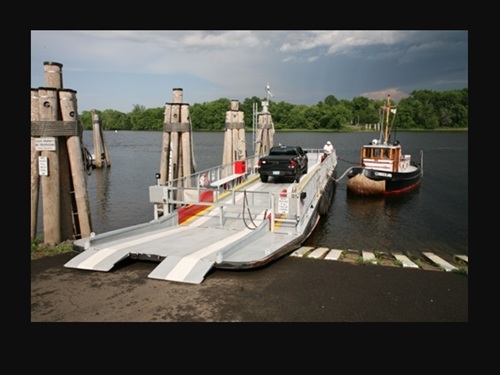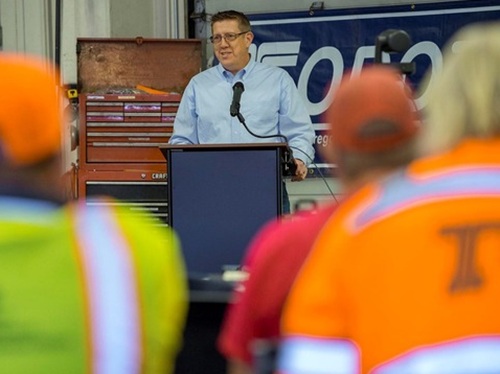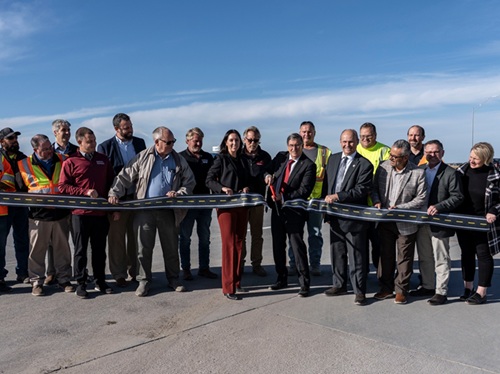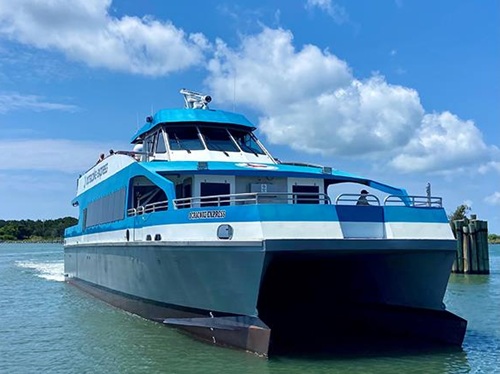The North Carolina Department of Transportation recently noted that more than 18,000 people took the Ocracoke Express passenger ferry during 2025 – the ferry service’s highest ridership level since 2022.
[Above photo by NCDOT]
The passenger ferry, which completed its seventh year of operation in September, carried 18,786 riders in 2025 – the highest since over 25,000-plus people took the Ocracoke Express in 2022 and an increase of 13 percent compared to 2024 ridership levels.

“This has been a popular service since it began and this year’s ridership shows that it’s trending upward,” said Jed Dixon, director of the NCDOT Ferry Division, in a statement. “The Ocracoke Express gives people the quickest, most convenient way to visit and enjoy all Ocracoke has to offer.”
The Ocracoke Express, which typically operates from May to September, carries up to 129 passengers directly between Hatteras and Ocracoke’s Silver Lake Harbor on a 65-minute ride across the Pamlico Sound.
The agency added that its passenger ferry service is especially popular with visitors interested in day trips to Ocracoke, an island known for its artistic shops, eclectic cuisine and rich history.
Other state departments of transportation operate a variety of ferry services as well.
For example, the Louisiana Department of Transportation and Development recently produced a video providing an overview of the ferry system it maintains for the state.
Meanwhile, the Connecticut Department of Transportation (CTDOT) is giving the oldest continuously running ferry service in the country a modern-day makeover to improve safety and accessibility.
Work is expected to start in January 2026 at the landings of the Rocky Hill/Glastonbury Ferry, which has been carrying people across the Connecticut River since 1655.

The ferry consists of a barge that can handle three cars and a handful of pedestrians and bicyclists. A diesel tugboat is attached to the barge – a setup known as “towing on the hip” – to make the four-minute trip across the river; a trip made on an as-needed basis depending on travel volume.
CTDOT noted that improvements will include Americans with Disabilities Act-compliant upgrades to sidewalks, ramps, and railings to facilitate pedestrians and bicyclists who make up a good deal of its customers.
In August, the Texas Department of Transportation provided an inside look at its ferry operations, which deliver important mobility connections for communities along the Gulf.
TxDOT noted that its ferry system – which operates a total of seven vessels – is much more than just a transportation vehicle but rather a body of work filled with courageous men and women who keep the ships afloat 24 hours a day, seven days a week.
The agency said the number of operational ferries put into service each day depends on several factors ranging from time of year, volume of traffic and maintenance schedules.
And in January, the Alaska Department of Transportation and Public Facilities launched a Wi-Fi pilot project aboard the MV Columbia ferry vessel; marking what the agency called a “significant step” in modernizing the Alaska Marine Highway System or AMHS.
That project also supports AMHS’s broader vision to enhance passenger experience and attract more travelers to the system. Future phases will expand Wi-Fi access across the fleet, starting with the MV Aurora and MV LeConte, utilizing recently secured federal funding.
 States
States
Kris Strickler to Step Down as Oregon DOT Director
November 14, 2025 States
States

